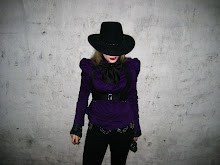 Garth: Hey, are you done yet? I'm getting tired of holding it.
Garth: Hey, are you done yet? I'm getting tired of holding it. Wayne: Yeah, that’s what she said.
(Wayne’s World, 1992)
Thus launched the most recent wave of what may be the greatest oral gag of our time. It’s the little black dress of the joke world; so simple and yet so functional that barely an exchange exists that cannot benefit from an unexpected injection. Whether repeated ad nauseam by Michael Scott on The Office or by your 15-year-old brother, That’s What She Said has penetrated pop culture to the hilt. But while it seems on the surface to be a misogynistic tool predominately the province of men, there’s a dynamic, female-centric undercurrent to the gambit that has been thus far overlooked.
First and foremost, That’s What She Said gives power to the woman who speaks. Who exactly she is may be unclear, but depending on context, she’s a virginal coquette, a wayward ingénue, or a seasoned cougar. What’s constant, however, is her sexual appetite: we always relay what she has to say in a sexual situation, and most often in an encounter with a man and his appendage.
As Freud proposed, psychosexual development revolves around the phallus, so whether you have it or lack it, the presence of the penis is felt deep within our psyches. Yet in spite of the phallocentric world in which we live, TWSS has supplanted the dick joke as the ultimate in sex humor for the early oughts. Last summer, The Huffington Post published a link to an early version of That’s What She Said from Alfred Hitchcock’s 1929 film, Blackmail. Back then, the phrase was “As the girl said,” but the effect was indeed the same. “Come here, stand in your place, or it will not come out right, as the girl said to the soldier,” Hitchcock tells a giggling blonde. He dominates the conversation with his imposing, masculine figure and delivery, but still speaks for the girl getting hot and heavy with a man in uniform.
Going even further back into history, one can find a similar sentiment delivered in English Edwardian times. “As the actress said to the bishop” was the line, which author Leslie Charteris of The Saint series later put to good use in the late 1920s. Fast forward to 2010, and we’ve got dozens of iPhone apps on the topic, YouTube mashups of Michael Scott’s best uses of the phrase, and even a website, TWSSstories.com. Many may have tired of its ubiquity by now, while others are just coming around.
In any time period, and in any That’s What She Said, the man is the mere object of the joke and a ‘thing’ to be commented upon. She is always the subject - the acting, speaking subject with sexual agency, so whether the TWSS joke is told by a man or a woman, the listener is receiving a woman’s point of view. It is for this reason I posit TWSS as a feminist phenomenon that has harnessed the willing participation of countless men, who unwittingly objectify themselves with every slip of the tongue. That’s What She Said subversively promotes female sexual empowerment by giving voice to her actions and desires, and thus, the gag always has a woman coming out on top, regardless of in whose mouth it originates.








No comments:
Post a Comment